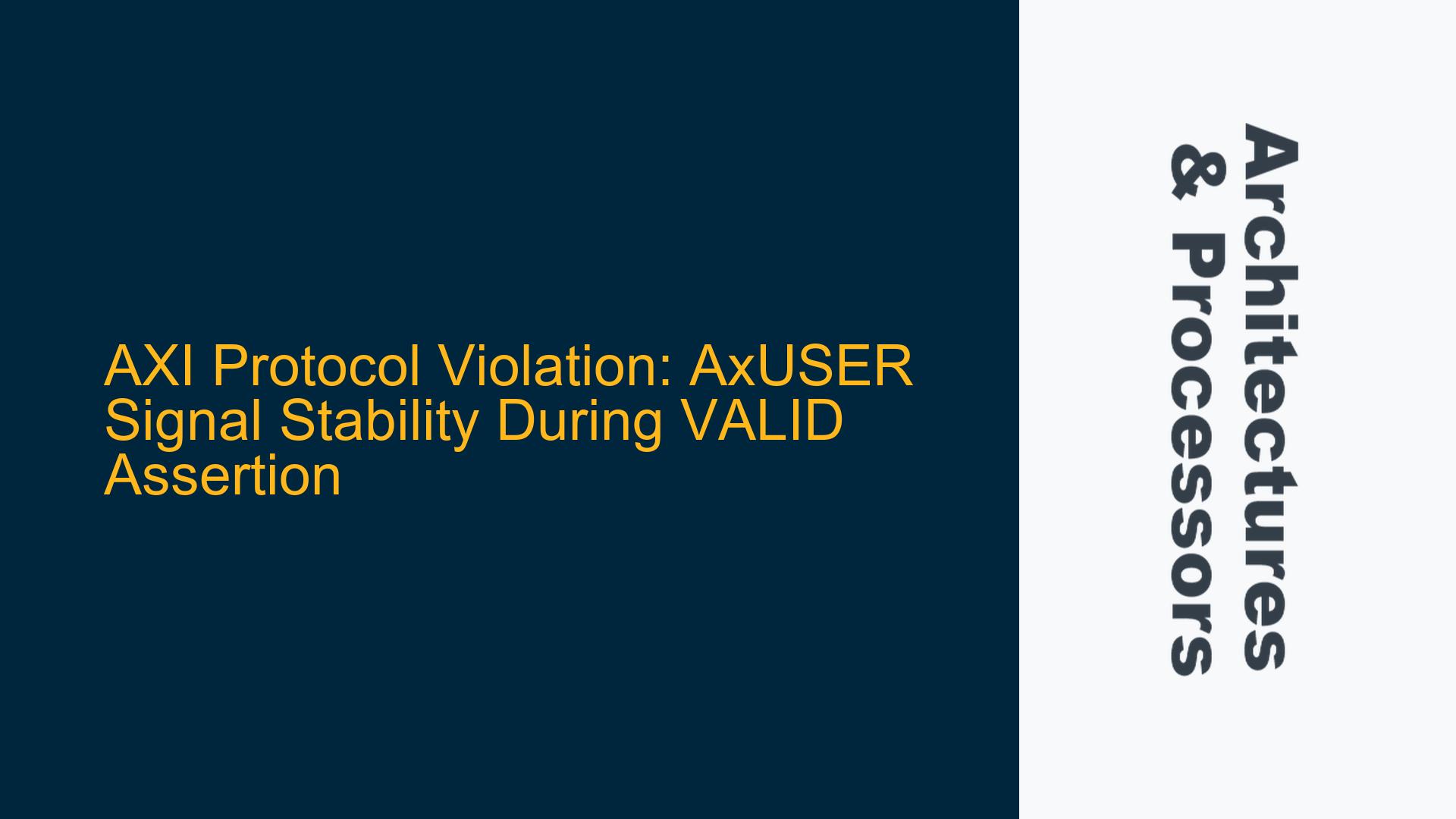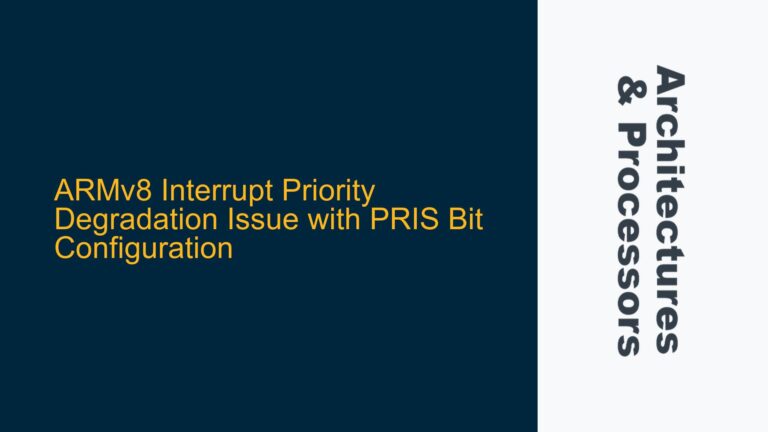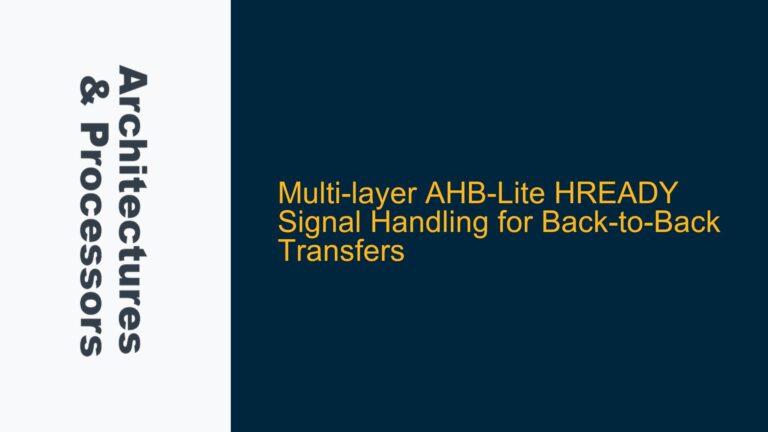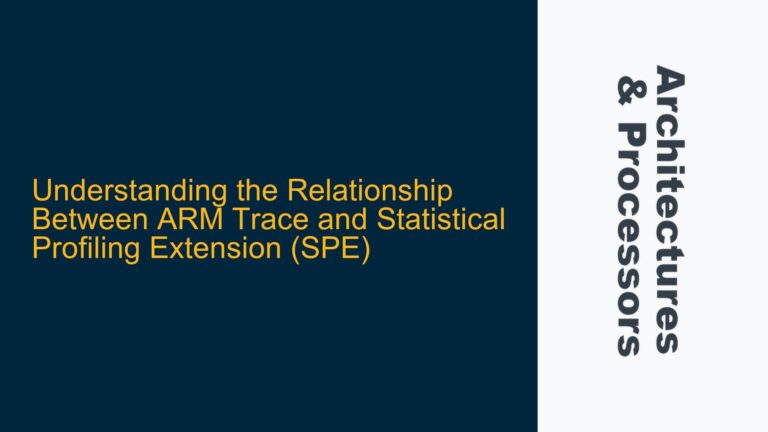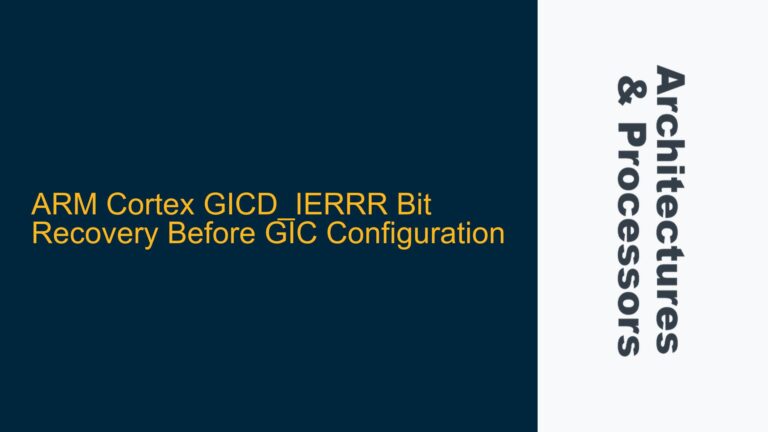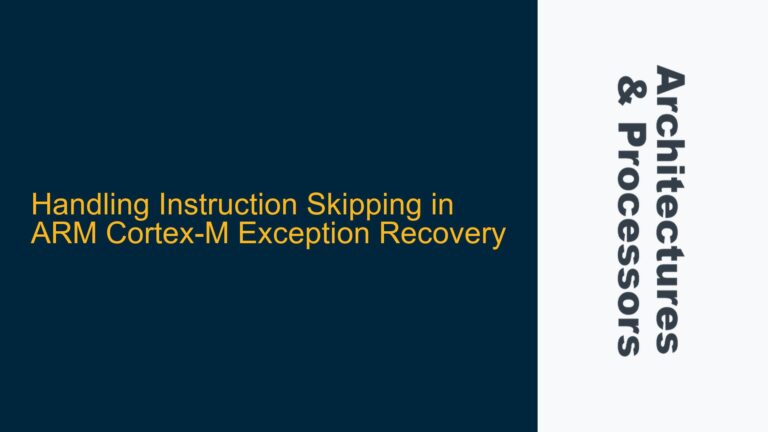AxUSER Signal Instability During VALID Assertion in AXI Transfers
In the context of AMBA AXI (Advanced eXtensible Interface) protocol, the stability of control and data signals during the assertion of the VALID signal is a fundamental requirement for ensuring reliable data transfers between masters and slaves. The AxUSER signal, which carries user-defined information such as security attributes (e.g., Stream ID, realm settings), must remain stable from the moment the VALID signal is asserted until the transfer is acknowledged by the READY signal. However, in certain implementations, particularly those involving combinatorial logic for security blocks, the AxUSER signal may change while VALID is asserted. This behavior violates the AXI protocol and can lead to unpredictable system behavior, including data corruption, security breaches, or incorrect transaction processing.
The core issue arises when a security block, placed between an AXI master and slave, modifies the AxUSER signal combinatorially without registering the output. This modification occurs while the VALID signal is already asserted, leading to a scenario where the slave may receive an inconsistent or incorrect AxUSER value. This violates the AXI protocol’s requirement that all signals must remain stable until the transfer is completed. The problem is exacerbated in systems where low-latency security processing is prioritized over strict protocol compliance, as the security block may not implement a proper register slice to ensure signal stability.
Protocol Violation Due to Combinatorial AxUSER Modification
The root cause of this issue lies in the violation of the AXI protocol’s handshaking mechanism. According to the AMBA AXI Protocol Specification (rev K), Section A3.2, the source (master) must present stable information on the bus once the VALID signal is asserted. This stability must be maintained until the transfer is acknowledged by the destination (slave) through the READY signal. The AxUSER signal, being part of the control information, is subject to this requirement. When a security block modifies the AxUSER signal combinatorially while VALID is asserted, it introduces a race condition where the slave may sample an incorrect or intermediate value of the AxUSER signal.
The combinatorial modification of the AxUSER signal is often implemented to minimize latency in security-critical systems. However, this optimization comes at the cost of protocol compliance. The security block, acting as an intermediary, does not buffer or register the AxUSER signal, leading to potential instability. This instability can result in the slave processing transactions with incorrect security attributes, such as an invalid Stream ID or realm setting. Such errors can compromise the system’s security model and lead to unauthorized access or data leakage.
Another contributing factor is the lack of synchronization between the security block and the AXI master-slave handshaking process. The security block assumes that its combinatorial logic will resolve the AxUSER signal before the slave samples it. However, this assumption does not account for timing variations or propagation delays in the system. As a result, the AxUSER signal may change during the critical window between VALID assertion and READY acknowledgment, leading to protocol violations.
Ensuring AxUSER Signal Stability Through Proper Handshaking and Buffering
To address the issue of AxUSER signal instability during VALID assertion, the following troubleshooting steps and solutions can be implemented:
Implementing Register Slices for Signal Stability
The most effective solution is to introduce register slices in the security block to ensure that the AxUSER signal remains stable during the entire handshaking process. A register slice acts as a buffer that captures the AxUSER signal and holds it stable until the transfer is acknowledged by the READY signal. This approach eliminates the risk of combinatorial modifications affecting the AxUSER signal while VALID is asserted. The register slice should be placed between the security block’s combinatorial logic and the AXI bus to ensure that the modified AxUSER signal is properly synchronized with the AXI protocol’s handshaking mechanism.
Adding Synchronization Logic for Timing Compliance
In addition to register slices, synchronization logic can be added to the security block to ensure that the AxUSER signal is stable before the VALID signal is asserted. This logic can include a small state machine that monitors the VALID and READY signals and ensures that the AxUSER signal is only modified during safe windows. For example, the state machine can wait for the READY signal to be deasserted before allowing any changes to the AxUSER signal. This approach ensures that the AxUSER signal is stable during the critical handshaking period and complies with the AXI protocol’s timing requirements.
Validating Signal Stability Through Simulation and Formal Verification
To ensure that the implemented solutions are effective, thorough simulation and formal verification should be performed. Simulation can be used to test the system under various timing conditions and verify that the AxUSER signal remains stable during VALID assertion. Formal verification tools can be used to prove that the design adheres to the AXI protocol’s requirements for signal stability. These tools can identify potential race conditions or timing violations that may not be apparent during simulation.
Optimizing Security Block Logic for Low Latency
While ensuring protocol compliance, it is also important to optimize the security block’s logic to minimize latency. This can be achieved by carefully designing the combinatorial logic to reduce propagation delays and by using pipelining techniques to overlap security processing with AXI transactions. The goal is to maintain low-latency security processing without compromising signal stability. For example, the security block can precompute potential AxUSER values and select the appropriate value based on the transaction context, reducing the need for real-time modifications.
Monitoring and Debugging AxUSER Signal Integrity
Finally, monitoring and debugging mechanisms should be implemented to detect and diagnose any issues related to AxUSER signal integrity. This can include adding debug registers to capture the AxUSER signal’s value at key points in the transaction and using trace buffers to record the sequence of events during AXI transfers. These mechanisms can help identify the root cause of any protocol violations and ensure that the system operates reliably in production environments.
By implementing these solutions, the issue of AxUSER signal instability during VALID assertion can be effectively resolved, ensuring compliance with the AXI protocol and maintaining the system’s security and reliability.
